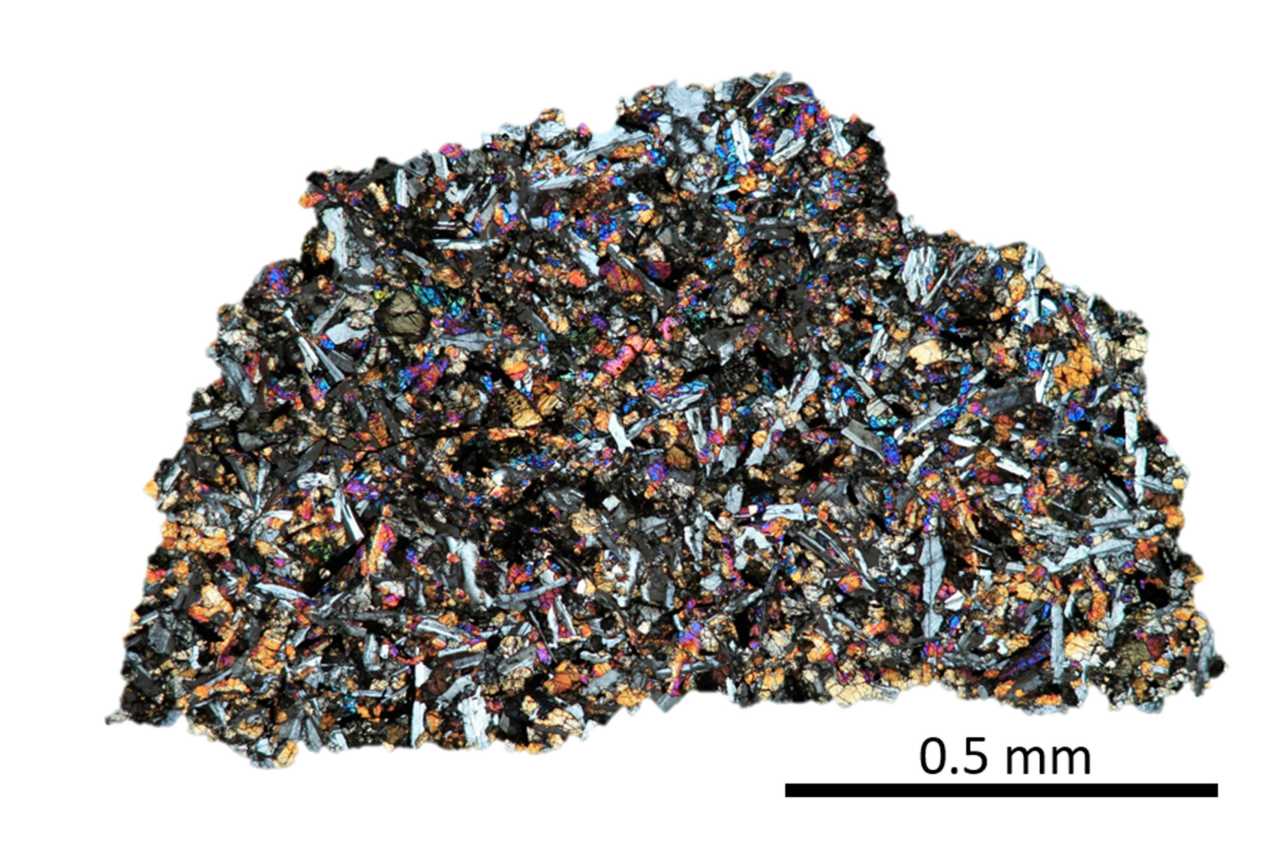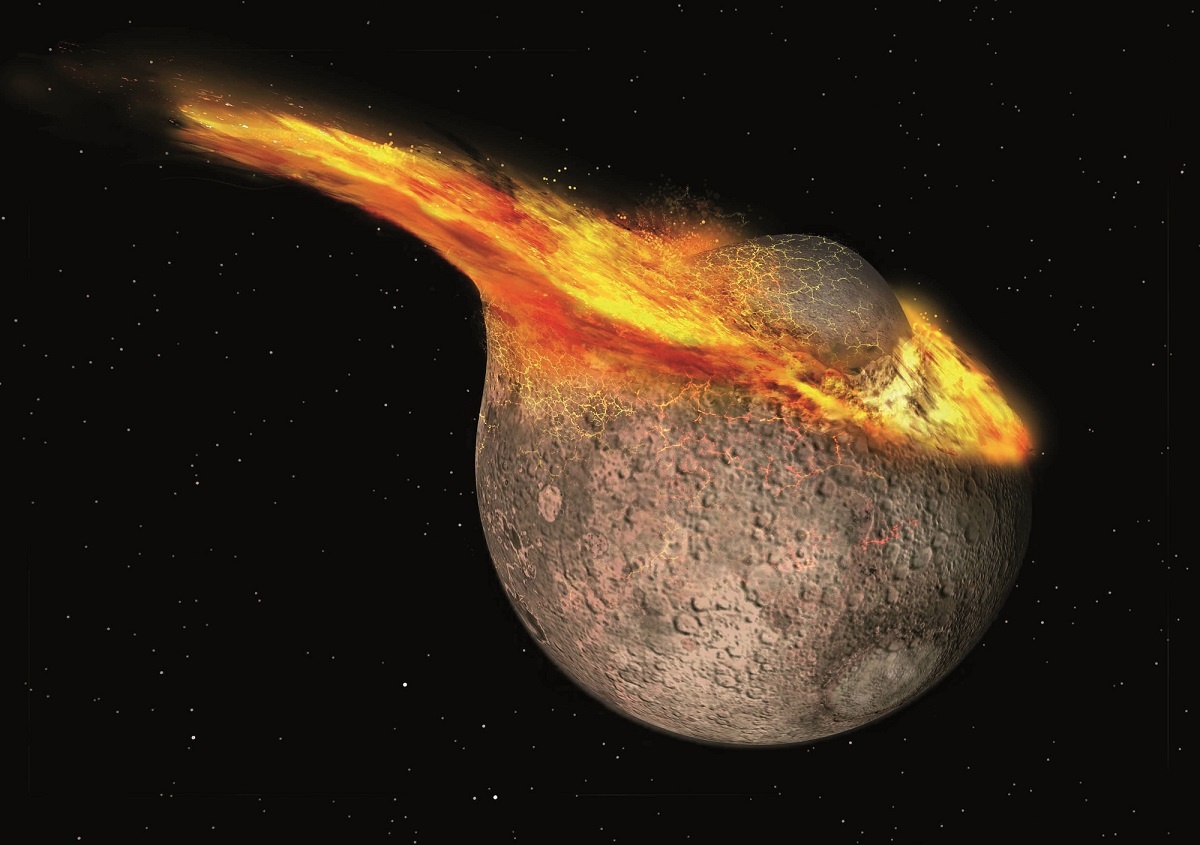The general consensus is that Theia crashed into Earth billions of years ago and led to the formation of the Moon. The story doesn’t end there though since there are a few lines of evidence to suggest the Moon could have been captured by the gravitational pull of the Earth instead. The orbit of the Moon is one such observation that leads to a different conclusion for it’s in-line with the plane of the ecliptic rather than the Earth’s equator. A team of researchers have suggested capture theory was the Moon’s origin.
Continue reading “Was the Moon Captured?”The Giant Planets Migrated Between 60-100 Million Years After the Solar System Formed
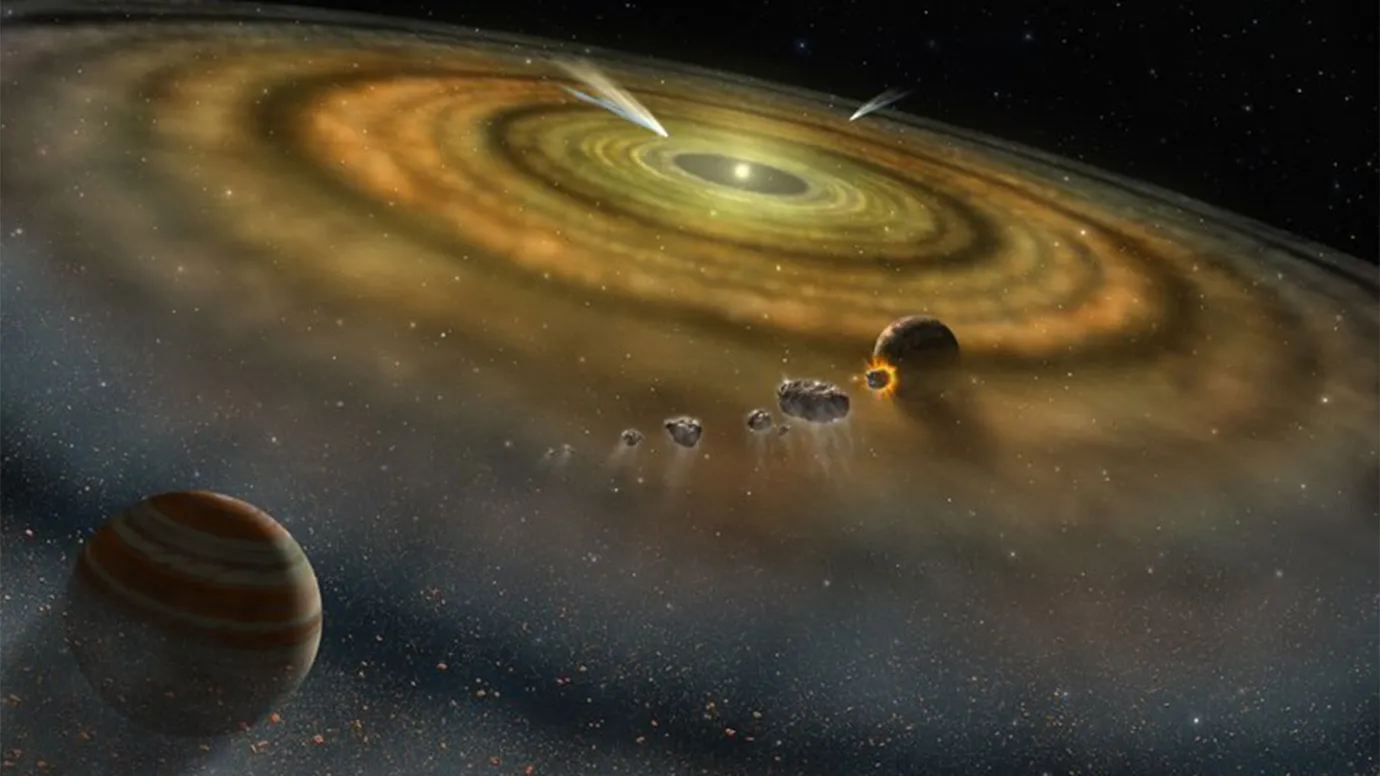
Untangling what happened in our Solar System tens or hundreds of millions of years ago is challenging. Millions of objects of wildly different masses interacted for billions of years, seeking natural stability. But its history—including the migration of the giant planets—explains what we see today in our Solar System and maybe in other, distant solar systems.
New research shows that giant planet migration began shortly after the Solar System formed.
Continue reading “The Giant Planets Migrated Between 60-100 Million Years After the Solar System Formed”What's the Earliest the Moon Could Have Formed?
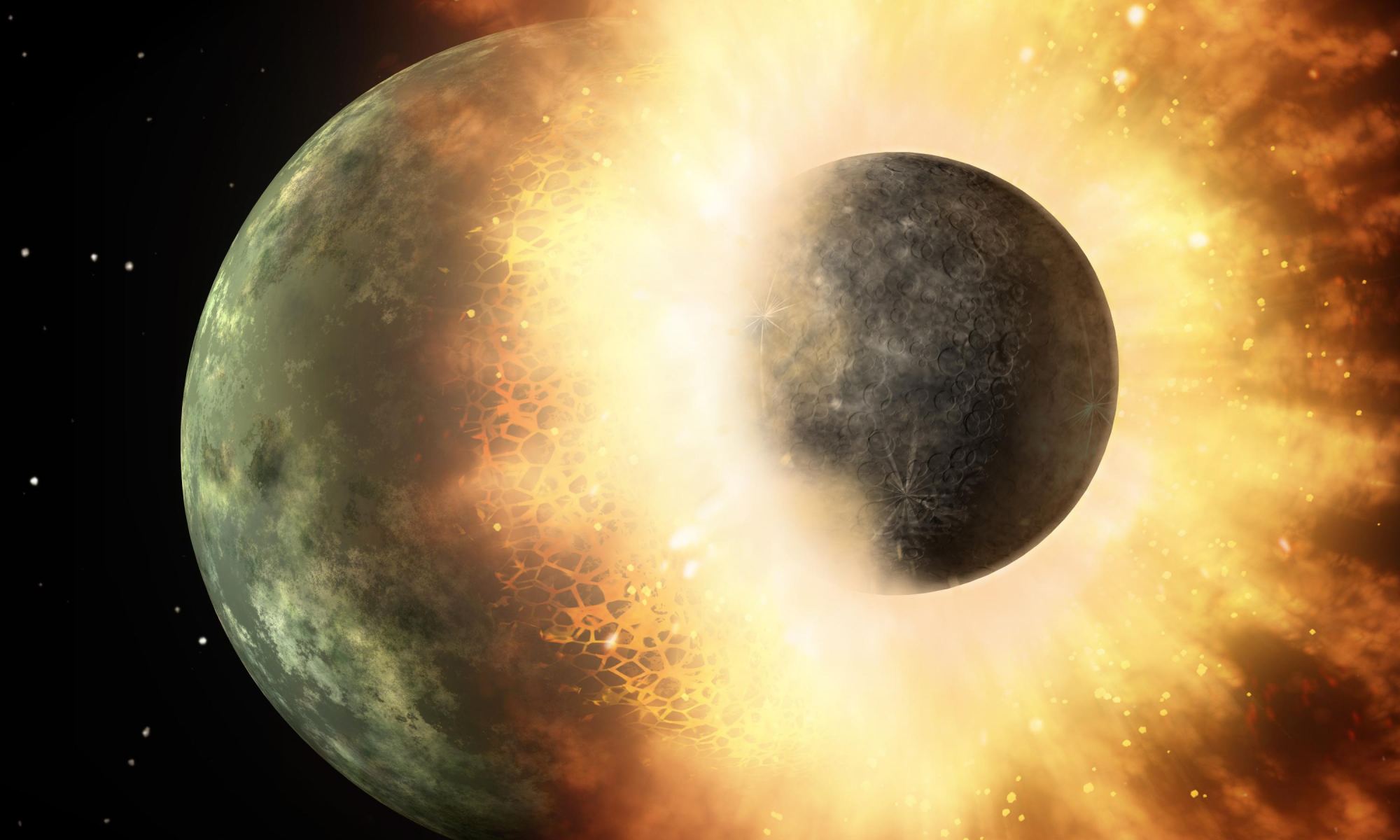
Astronomers are pretty sure they know where the Moon came from. In the early Solar System, a Mars-sized object dubbed Theia smashed into Earth. This cataclysmic collision knocked a huge mass of material into orbit, which coalesced and cooled into the Moon. But establishing exactly when this occurred is a difficult task. At the 55th annual Lunar and Planetary Science Conference (LPSC 55) last month in The Woodlands, Texas, researchers proposed a new timeline of events that moves the giant impact earlier than previous predictions, at just 50 million years after the formation of the Solar System.
Continue reading “What's the Earliest the Moon Could Have Formed?”Earth is Hiding Another Planet Deep Inside
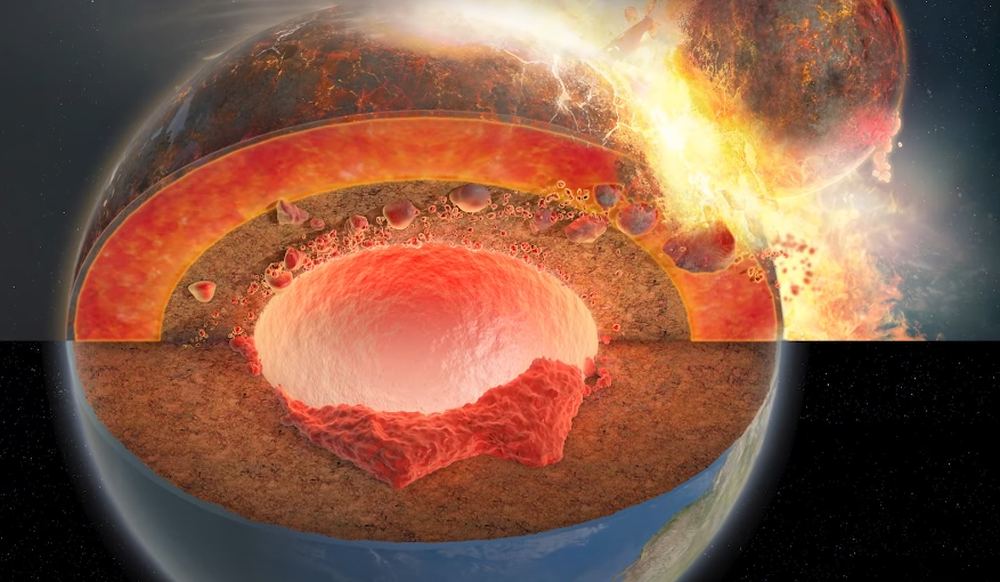
Earth’s early history is marked by massive collisions with other objects, including planetesimals. One of the defining events in our planet’s history, the formation of the Moon, likely resulted from one of these catastrophic collisions when a Mars-sized protoplanet crashed into Earth. That’s the Giant Impact Hypothesis, and it explains how the collision produced a torus of debris rotating around the Earth that eventually coalesced into our only natural satellite.
New research strengthens the idea that Theia left some of its remains inside Earth.
Continue reading “Earth is Hiding Another Planet Deep Inside”Lunar Rocks Have Earth's Noble Gases Trapped Inside. More Evidence That the Moon Came From the Earth
Piecing together the history of the Solar System from the traces left behind isn’t easy. Bit by bit, however, we’re working it out. This month, new research examining the composition of lunar meteorites offers compelling evidence that the Moon and the Earth were formed from the same material, perhaps in the aftermath of a cataclysmic collision some 4.5 billion years ago.
Continue reading “Lunar Rocks Have Earth's Noble Gases Trapped Inside. More Evidence That the Moon Came From the Earth”The Early Solar System was Messier and More Violent Than Previously Believed
Our conventional models of planet formation may have to be updated, according to a pair of new papers.
Accretion is the keyword in current planet formation theory. The idea is that the planets formed out of the solar nebula, the material left over after the Sun formed. They did this through accretion, where small particles accumulate into more massive objects. These massive boulder-sized objects, called planetesimals, continued to merge together into larger entities, sometimes through collisions. Eventually, through repeated mergers and collisions, the inner Solar System was populated by four rocky planets.
But the new research suggests that the collisions played out much differently than thought and that objects collided with each other several times, in a series of hit and runs, before merging. This research fills some stubborn holes in our current understanding.
Continue reading “The Early Solar System was Messier and More Violent Than Previously Believed”The Moon Might Have Formed a Little Later than Originally Believed
According to the Giant Impact Hypothesis, the Moon formed when a Mars-sized object (named Theia) collided with Earth billion years ago, at a time when the Earth was still a ball of magma. This event not only led to the Earth-Moon system we recognize today, it is also beleived to have led to the differentiation of the Earth’s core region into an molten Outer Core and a solid Inner Core.
However, there has been an ongoing debate as to the timing of this impact and how long the subsequent formation of the Moon took place. According to a new study by a team of German researchers, the Moon formed from a magma ocean that took up to 200 million years to solidify. This means that the Moon finished forming about 4.425 billion years ago, or 100 million years later than previously thought.
Continue reading “The Moon Might Have Formed a Little Later than Originally Believed”The Moon Might Be More Metal-Rich Than We Thought
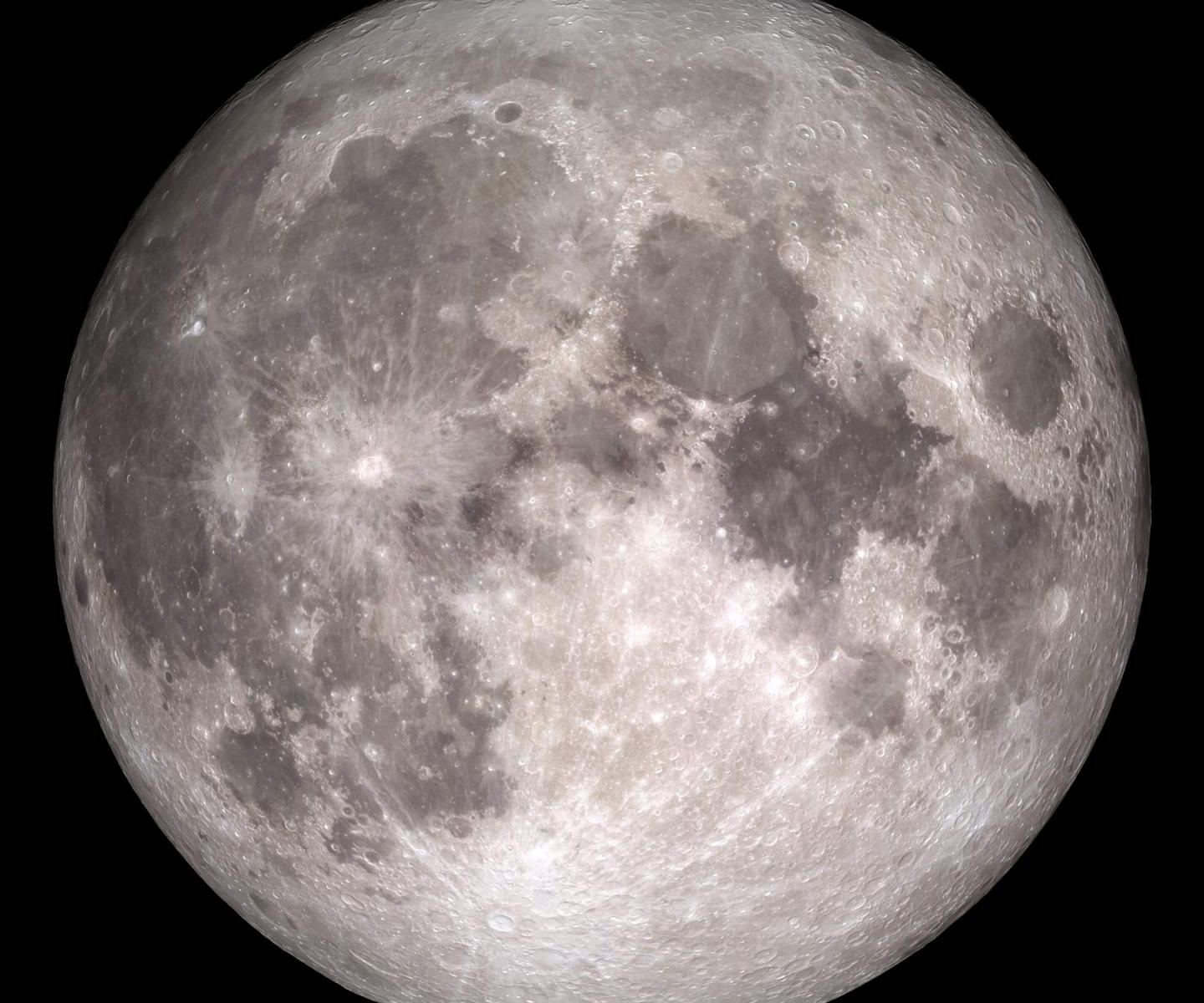
A new study shows that the Moon is more metal-rich than previously thought. That has some far-reaching implications for our understanding of the Moon’s formation. If their results are solid, it means that we may need to re-think the giant impact hypothesis for the formation of the Moon.
Continue reading “The Moon Might Be More Metal-Rich Than We Thought”Do We Now Understand Why the Moon’s Near and Far Sides Look So Dramatically Different?
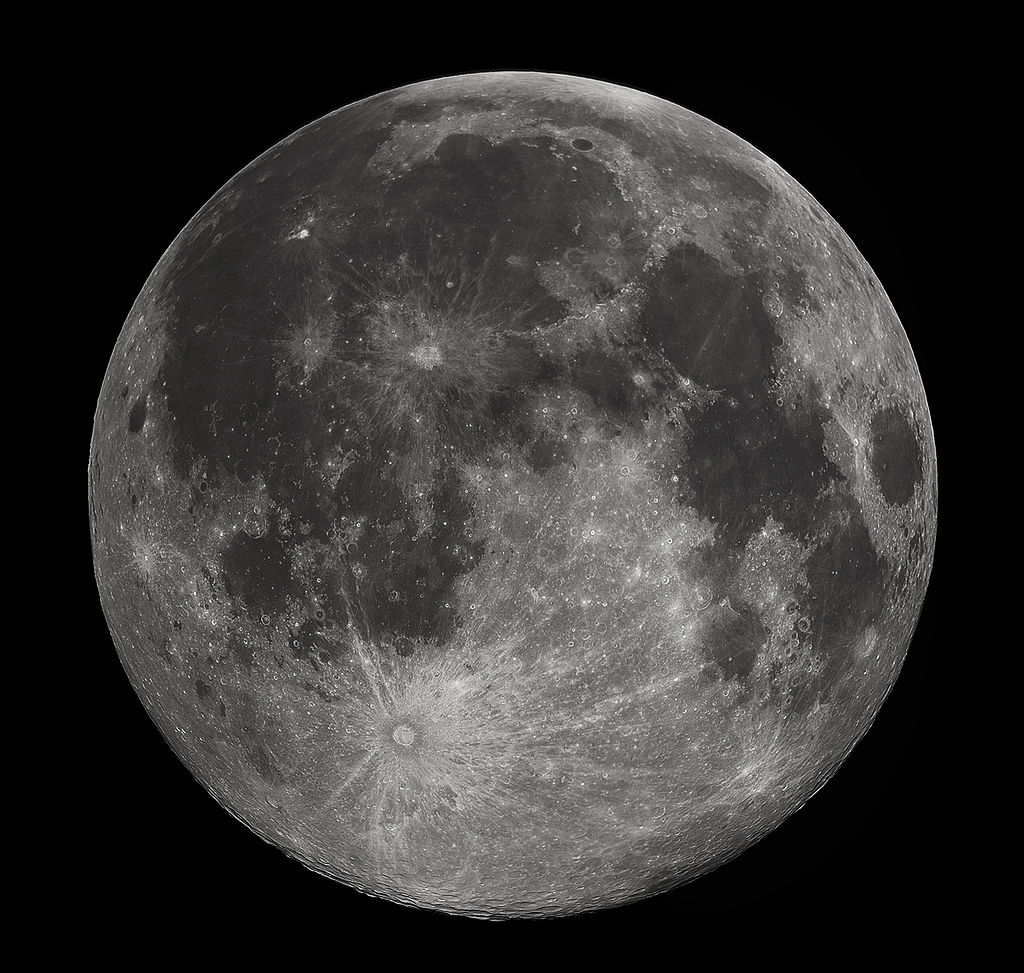
The Moon is easily the most well-studied object in the Solar System, (other than Earth, of course.) But it still holds some puzzles for scientists. Why, for instance, is one side of the Moon so different from the other?
Continue reading “Do We Now Understand Why the Moon’s Near and Far Sides Look So Dramatically Different?”New Study Shows the Earth and Moon are not so Similar After All
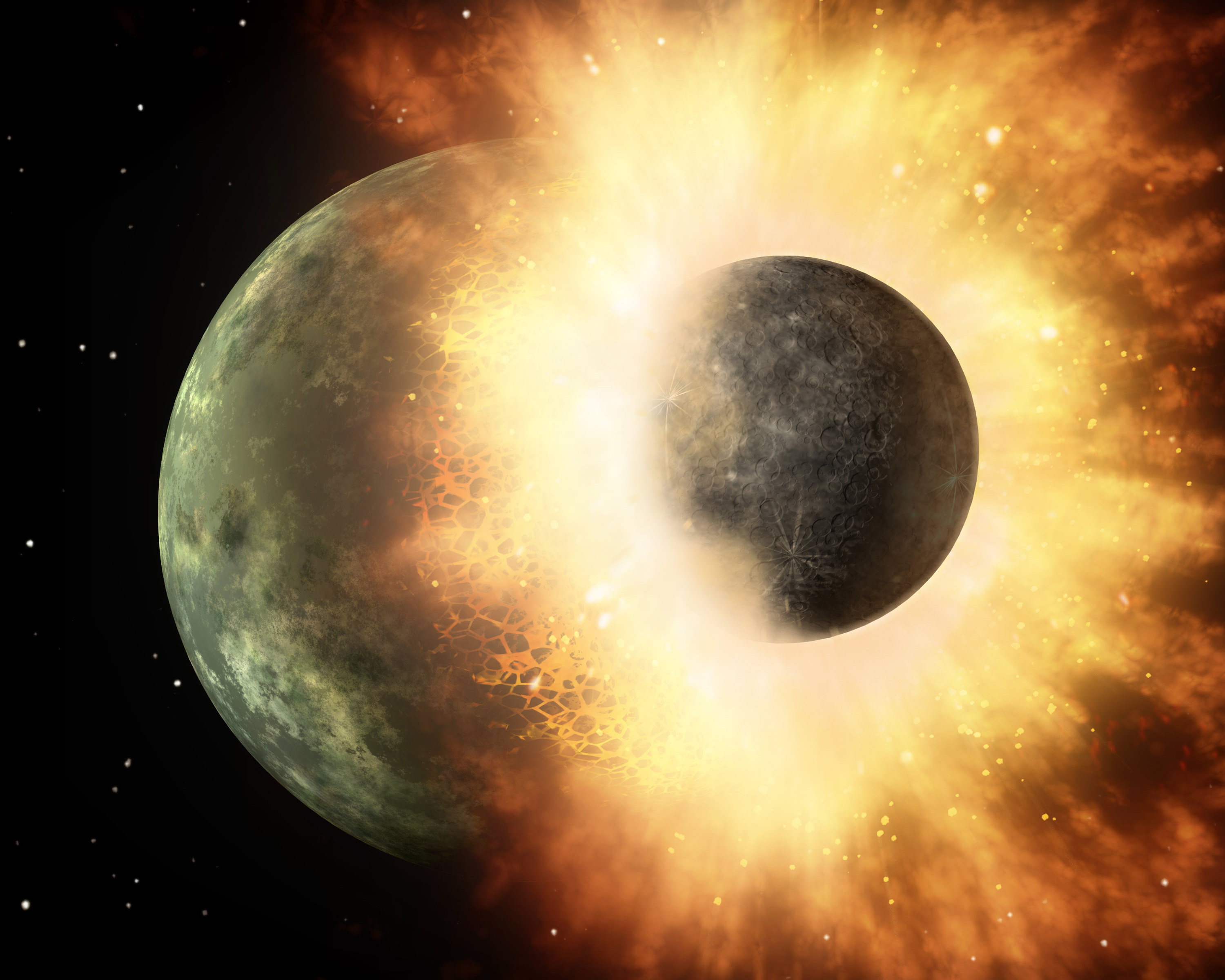
According to the most widely-accepted theory, the Moon formed roughly 4.5 billion years ago when a Mars-sized object named Theia collided with Earth (aka. the Giant Impact Hypothesis). This impact threw up considerable amounts of debris which gradually coalesced to form Earth’s only natural satellite. One of the most compelling proofs for this theory is the fact that the Earth and the Moon are remarkably similar in terms of composition.
However, previous studies involving computer simulations have shown that if the Moon were created by a giant impact, it should have retained more material from the impactor itself. But according to a new study conducted by a team from the University of New Mexico, it is possible that the Earth and the Moon are not as similar as previously thought.
Continue reading “New Study Shows the Earth and Moon are not so Similar After All”

